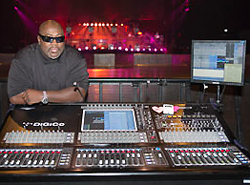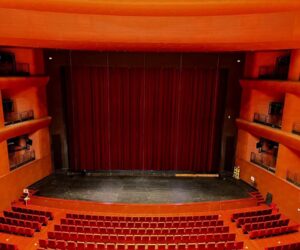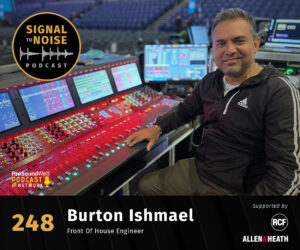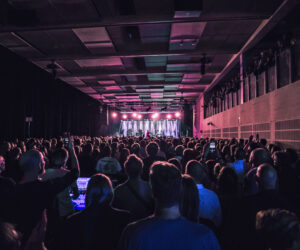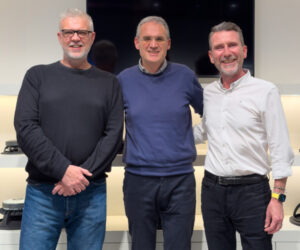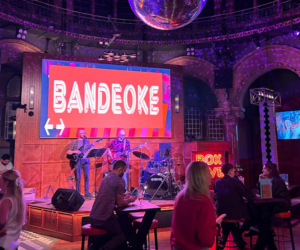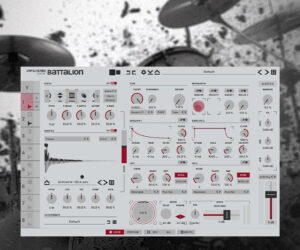With more than 50 international dates on the horizon in support of her latest outing, Girl on Fire, Grammy-award wining artist Alicia Keys has surrounded herself with an adept team of engineers with support from Clair Global and DiGiCo mixing systems.
With five SD racks (two for FOH, two for monitors, and one for opening artist, Miguel), they’re also carrying a pair of SD10s (one at FOH and monitor world) to handle the eight-member band including the headliner.
Newly positioned at FOH is Tim Colvard, who took over the European leg of the tour. Although Colvard’s employed DiGiCo consoles for many of his clients international tours, this was his first time on an SD10 (as well as his debut outing with both the artist and with Clair Global). He joins Clair FOH tech Randy Weinholtz and monitor mixmaster Antonio Luna for the already-in-progress global tour.
The challenge of a one-day rehearsal prior to his first live show could’ve been stressful. However, Colvard’s extensive previous hands-on experience on an SD7 with Madonna, Usher and others lent itself to getting up and running quickly on the new console and Keys’ eight-piece outfit, comprised of keys, bass, drums, guitar, and a trio of background singers.
“A phone conversation with Alicia convinced me that she really cares about her sound,” says Colvard. “And being intrigued by her music made joining an already-in-progress tour an easy decision. With Alicia having one of the most powerful and dynamic voices in the industry, DiGiCo’s dynamic EQ really came in handy for smoothing everything out, especially when she’s really belting it out in the high-end.
“Also, I’m maximizing all of the dynamic compression available on the SD10 for all of the Pro Tools channels.
“It is also important for me to use snapshots, which I time to run consecutively,” he continues. “This allows me to do certain mutes on the piano, particularly when it goes down the lift in the middle of the song and gets disconnected, as well as for other microphones in different parts at the stage. Using these features gives me more time to mix instead of trying to remember what inputs should be muted or un-muted.”
Colvard’s also carrying a rack of external effects, including a TC Electronic 2290, TC D2, Eventide H3000 ES, a couple of Yamaha 990s and a Lexicon 960L, which gives him “a variety to cover most algorithms needed to do duplicate the album effects.”
“We love the flexibility of the SD10 desk,” adds Weinholtz. “The dynamic EQ is really nice and having the ability to create a fader bank of multiple input/outputs, and whatever your brain can think of, is great.”
But perhaps the most interesting aspect of the tour’s audio specs is Antonio Luna’s employment of an Aviom personal monitor mixing system—typically found in church, theatre and studio settings primarily, but not so much in touring. Luna’s using this in tandem with his SD10 to allow the band to customize and control their own individualized monitoring needs.
“The Aviom has been pretty cool,” Luna says. “I didn’t think I’d ever use it again after Aerosmith in 2009, but the musical director wanted to and so we figured out a way to incorporate it and it’s been working well since day one. I’m able to send 16 sends to the primary band members, who are all able to mix themselves, which means I get left alone to mix the three background vocalists and the singer.


